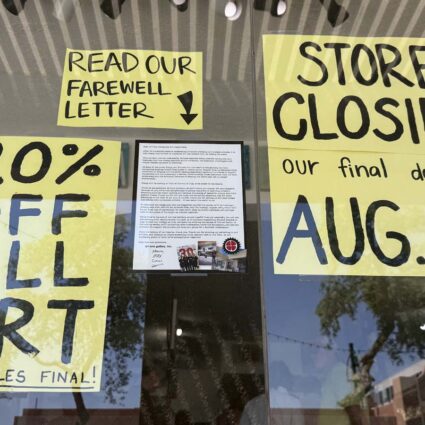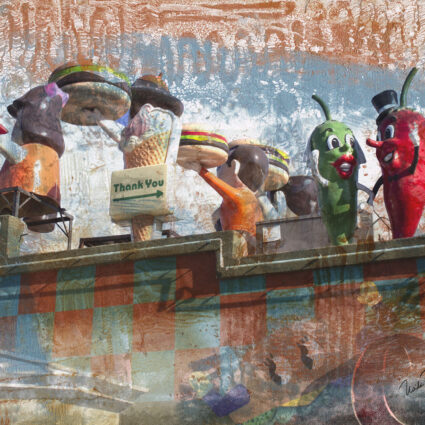Houston creatives and artists discuss the influence of climate change on their individual practices and possibilities for creative responses to climate crisis.
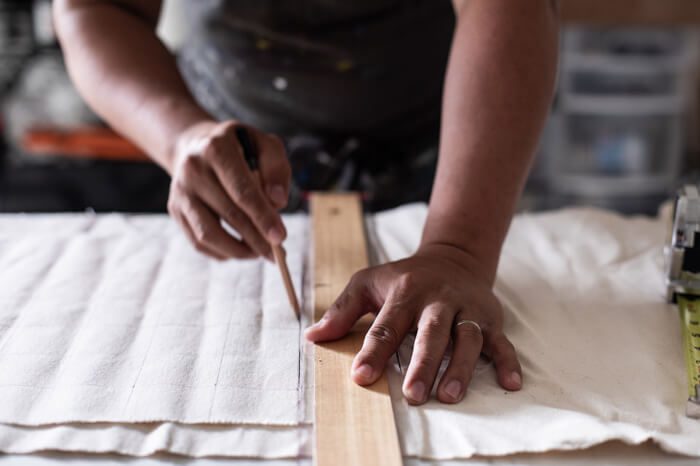
After the August release of the Intergovernmental Panel on Climate Change’s dire 2021 report on climate change, the New York Times, summarizing the report, wrote, “Even if nations started sharply cutting emissions today, total global warming is likely to rise around 1.5 degrees Celsius within the next two decades, a hotter future that is now essentially locked in.”
The report was not a surprise, but it was sobering in a way that leaves you asking hard questions about how you plan to live your life. As someone who’s devoted my life to artmaking, I needed to know if art really has a place in a world in crisis—and if so, how we as artists can make work that is informed or, perhaps, transformed by the stakes at hand.
With my questions in mind, I spoke to four Houstonian artists and designers to get an idea of how Gulf Coast creative workers are thinking about climate change and if, indeed, the arts can address some of the challenges our society will face in the coming decades.
•
Alli Villines, who’s a native of southwest Louisiana, holds master’s and bachelor’s degrees in music from Arizona State University in Tempe and McNeese State University in Lake Charles, Louisiana, respectively. She has been working at the intersections of her practice, which currently includes performing with various Houston theaters, teaching children and adults to sing and play ukulele, writing musicals, and collaborating with Houston puppet-maker Greg Cotes on Lo-Fi Puppets for twenty years.
“Whether I can remember or not, hurricanes are a huge part of my life, and now that I’ve made my home in Houston, Texas, they will continue to be a part of my life. And so they will always be a part of my art, directly and indirectly,” Villines wrote in response to my question about geographic roots and practice. “The coastal erosion of Louisiana is insane, the numbers,” she says. The United States Geological Survey concluded in a 2011 report that Louisiana was losing, on average, approximately a football field’s worth of wetlands every hour. “How can seeing the land disappear from maps, the people move away, how could that not effect change?”
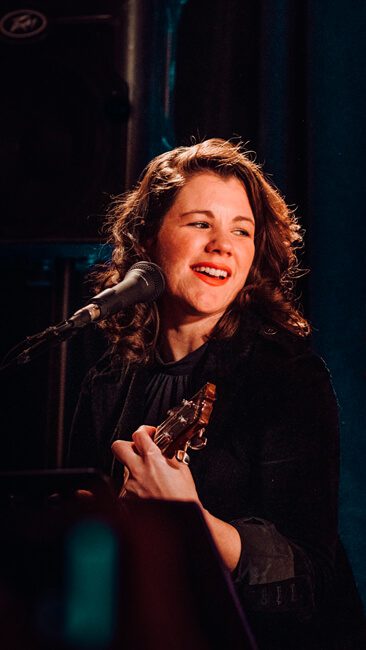
Despite this outrage and sorrow, the lightbulb moment in terms of practice didn’t come until graduate school, when she took classes in both ecomusicology and puppetry in one semester.
“Those classes changed how I saw sustainability in those art forms. I had my mind opened to music in the natural world, how instruments are made, how musicians can have an impact on ecology and vice versa, and in the puppetry class, I learned about found-object puppetry and the very close ties of puppetry to activism,” she writes. “My final project in that ecomusicology course had to do with hurricanes and their representation in classical and jazz music. It was also a way to tell my class in Arizona that where I come from is literally disappearing off the map.”
Alli is my opposite—jumping into protests isn’t her way of going about things, though she will and has done so. Her life and art are her methods of protest—“slow, lifetime work,” she calls it. “I think and have observed that the artists are the activists and vice versa”—an observation, here in Houston at least, I find to be true as well.
As the Gulf Coast becomes subject to more frequent and catastrophic hurricanes, “I feel the urgency to say more with my art,” Villines writes. “If I get the chance again to stand in front of an audience of people, I’d like to create a hurricane with them using soundscape and movement. I hope to record my micro-opera play about Hurricane Laura; it’s called Four Women and Laura. Very soon, I will rent an outdoor space and have an evening of sharing songs I’ve written and invite people to come cry with me, to release or mourn or weep for joy, and then we can collectively resolve.”
•
When we caught up over a video call for this story, it was the first time I’d seen Jackson Neal since 2017—I was a summer communications intern at Writers in the Schools (WITS) Houston, and Neal, who uses they/them and he/him pronouns, was a high schooler on WITS’s award-winning youth poetry slam team, Meta-Four. Jackson went on to become Houston’s fourth Youth Poet Laureate in 2019 and transferred from the University of Houston to the University of Wisconsin-Madison after gaining acceptance into First Wave, a full-tuition scholarship program for hip-hop and spoken word artists—the only program of its kind in the world.
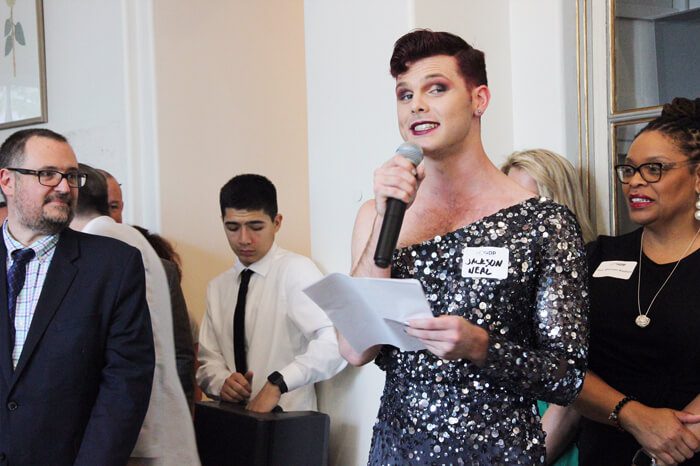
A college junior now, Neal has been writing seriously since the age of fifteen, when their participation in WITS connected them to Meta-Four. Incorporating sociopolitical issues “really wasn’t a question for me,” an impulse that was amplified by what they term “the architecture of performance-based poetry… when you’re sharing space with people, naturally, you’re going to lean towards the thing that connects you as human beings, the sociopolitical climate that we share,” they say.
However, it wasn’t until a 2018 call for submissions for environmentally minded art from the organizations Youth Speaks and COAL + ICE, for which they wrote and performed the poem “Multiple Choice Test” based on the aftermath of Hurricane Harvey, that Jackson first consciously reflected on climate change in a concrete manner—and the reflection made them angry.
“As residents of the Gulf Coast, the companies that run our land did that to us! It was not a coincidence,” says Neal, referring to the Houston area’s 4,600 energy-related firms, according to the Greater Houston Partnership. “That’s how that happened. A few very, very powerful people who made a lot of choices and have a lot of money are literally determining the course of weather. That is what ancient peoples used to describe the gods—who controls the weather?”
That kind of rage and grief that so often comes with fully acknowledging the reality of the climate crisis is something that slam poetry has decades of practice making space for, Neal points out.
“Slam allows for us to have a kind of communal grieving ceremony,” they say. “When we are gathered, oftentimes the function of the space is to name what it is that we’ve endured, which people often think is not worth naming. As we approach tragedy, it becomes something that we identify, that we recognize. That equips us, firstly, to address things, [when] we know that they’re happening, but also—Yesika Salgado said it in an interview, ‘Poetry, at its core, is the constant reminder that we are not alone.’”
•
I often call Matt Manalo my “forever fellow Fellow” in reference to our experience as the first set of artists chosen for the DiverseWorks Project Freeway Fellowship in 2019, which led to one of Manalo’s most ambitious and best-known projects, the Alief Art House, a grassroots community gallery space made from a used shipping container that runs without electricity or water, making its carbon footprint nearly zero. A first-generation immigrant from the Philippines, Matt also founded Filipinx Artists of Houston and has maintained a sustainable multimedia studio artistic practice for over ten years that explores this personal history and the politics surrounding it. The latter two initiatives are featured prominently in this year’s Texas Biennial.
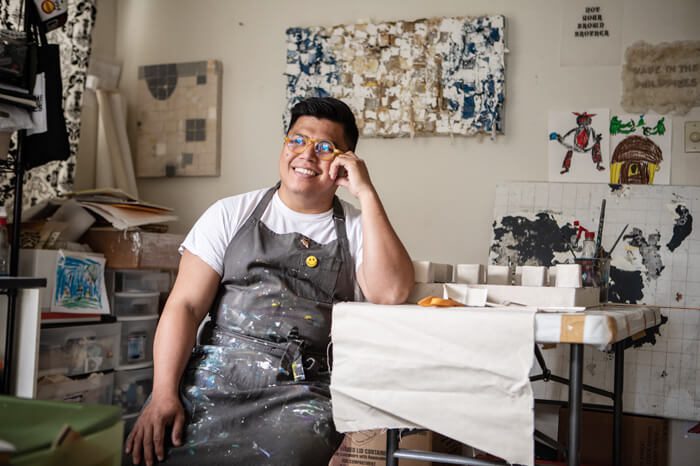
“In Manila, in the house I grew up in, I would go around the garden picking up stuff, looking around, staying curious. I continue to do the same now,” he says. “I try, as much as possible, to have zero waste that’s coming out of my studio. I reuse a lot of materials, and I’ve formed a small community where we share materials. Being an artist, we’re taught to go to the art store and buy new paint, new canvas, new brushes. I try to do the opposite. If I can make work without having to buy the materials to make it, I will.”
The Alief Art House is guided by this ethos as well. And beyond minimizing the carbon footprint of and waste produced by the space itself, he’s resisted making it a nonprofit.
“I don’t really have donors involved with oil and gas or mining. I don’t have to worry about accepting money from these big corporations that abuse the planet. [The Art House] is a gallery, but it’s also a communal space, and it’s a space where these kinds of conversations can be had.”
This practice took root when he was a junior in the University of Houston BFA program, without the money needed to buy new materials.
“I started scavenging through the grad students’ disposal area, and I realized that there’s value in these things, you know? There’s more mental exercise involved in it, because you have to imagine what things could look like or how they could be used in a certain way.”
Manalo’s personal work is heavily textile-based, so it confronts the ecological crisis of the global clothing manufacturing industry and the waste it produces. He sources many of his materials through thrifting, but even then, “It’s not even being dispersed fast enough to deal with the issue.”
“I think as artists, we can easily solve this problem,” he says. “We’re innovators; we’re problem solvers. I think that if we discuss this topic a lot more within our communities, about waste and excess and labor, something could be done with the clothes that nobody buys, that don’t get picked up at thrift stores, so they don’t get sent to other countries just because they didn’t serve their purpose here. They can serve a new, bigger purpose.”
•
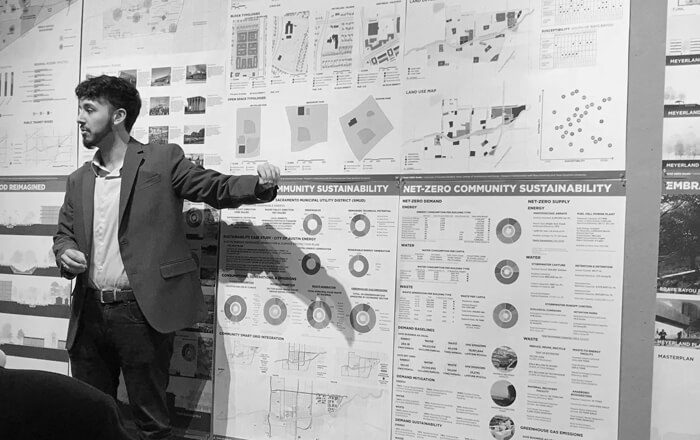
Joaquin Viera is fresh out of the office in a blazer and dress suit when our video call starts. I feel slightly self-conscious in my casual house clothes, but it’s hard to stay that way around Viera, a twenty-five-year-old Houstonian architectural designer and community organizer—both because we’ve known each other for more than ten years, having both gone to the High School for the Performing and Visual Arts (HSPVA, now Kinder HSPVA), and because he’s incredibly easygoing, an important trait for his practice of community-driven sustainable design.
Case in point: we’ve both volunteered with the City of Houston’s Complete Communities program for our respective home neighborhoods, Sunnyside and Kashmere Gardens—both rurban (rural-urban fringe), low-income, majority Black and Latino neighborhoods. I washed my hands of the initiative after a year, frustrated with its ineffective community engagement process. Joaquin not only stayed involved with it, he pushed past the program’s obstacles and used his training to model what community-engaged design and planning should look like.
Viera’s skill at the work is understandable: reversing the harms of historic disenfranchisement in Black and Brown neighborhoods has been his mission for over half his life.
“As a kid, I was blessed to live adjacent to a really large, open wooded area. I’d go into these woods with my younger brother and family and just run around, explore, forage for things,” says Viera. “When I was eleven or twelve, that property was purchased. Acres’ worth of forested area was torn down and turned into a subdivision. I was watching, through a chain-link fence, all this landscape being destroyed that I had grown up exploring.
“I thought architecture was supposed to be responsible for its community—when I saw that, I realized that it wasn’t. That was a core motivator, pushing me into environmental accountability, environmental justice. That was something I really wanted to step into the space with from day one.”
Our conversation turns toward the design world’s prevailing tendency to separate aesthetics, sustainability, and community engagement, as though the three cannot exist in tandem. Joaquin wants it all—to him, art, aesthetics, and beauty are as important as (and indeed interconnected with) environmental sustainability and community-level climate resiliency.
“Not only should the built environment have architecture that’s tackling flooding, for example, it should also serve the community as public art, as recreation space, as beautiful environments to be in,” he says. “It’s the difference between a concrete floodway and a greenspace with native wildlife, native plant life, that also serves as a floodway.”
When I ask if he has any projects in the works that are influenced by his design ethos, he answers, “I’ve just purchased a home in Southwest Houston, two houses down from the house I grew up in. The home that I purchased flooded during Harvey. So I’m still facing the same environmental issues that I grew up with. There’s an amazing amount of value in tackling environmental resilience at the residential scale. My home is grounds for that experimentation.”
•
For four creatives working in entirely different disciplines, their work in addressing the climate crisis has some astonishing parallels.
The naming of catastrophe and making space for our reactions to it that Alli and Jackson both identify in their respective art forms represent the enormous role the arts might play in humans’ individual and collective ability to mourn what we’ve lost, adapt to new realities, be emotionally resilient. Matt and Joaquin believe that artists and designers are problem solvers capable of modeling how to combat the material, infrastructural culprits of climate change with their practices and have created successfully built experiments to prove it.
Taken together, it is more than enough to answer my question about the ability of creative fields to address the difficult century ahead with an emphatic “yes.” However, the question must be raised by more than just me. The art world can rise to the challenges ahead, but only if the responsibility to do so is acknowledged and actively practiced, and the necessary sacrifices are made, starting now.
The clock has long been ticking.
